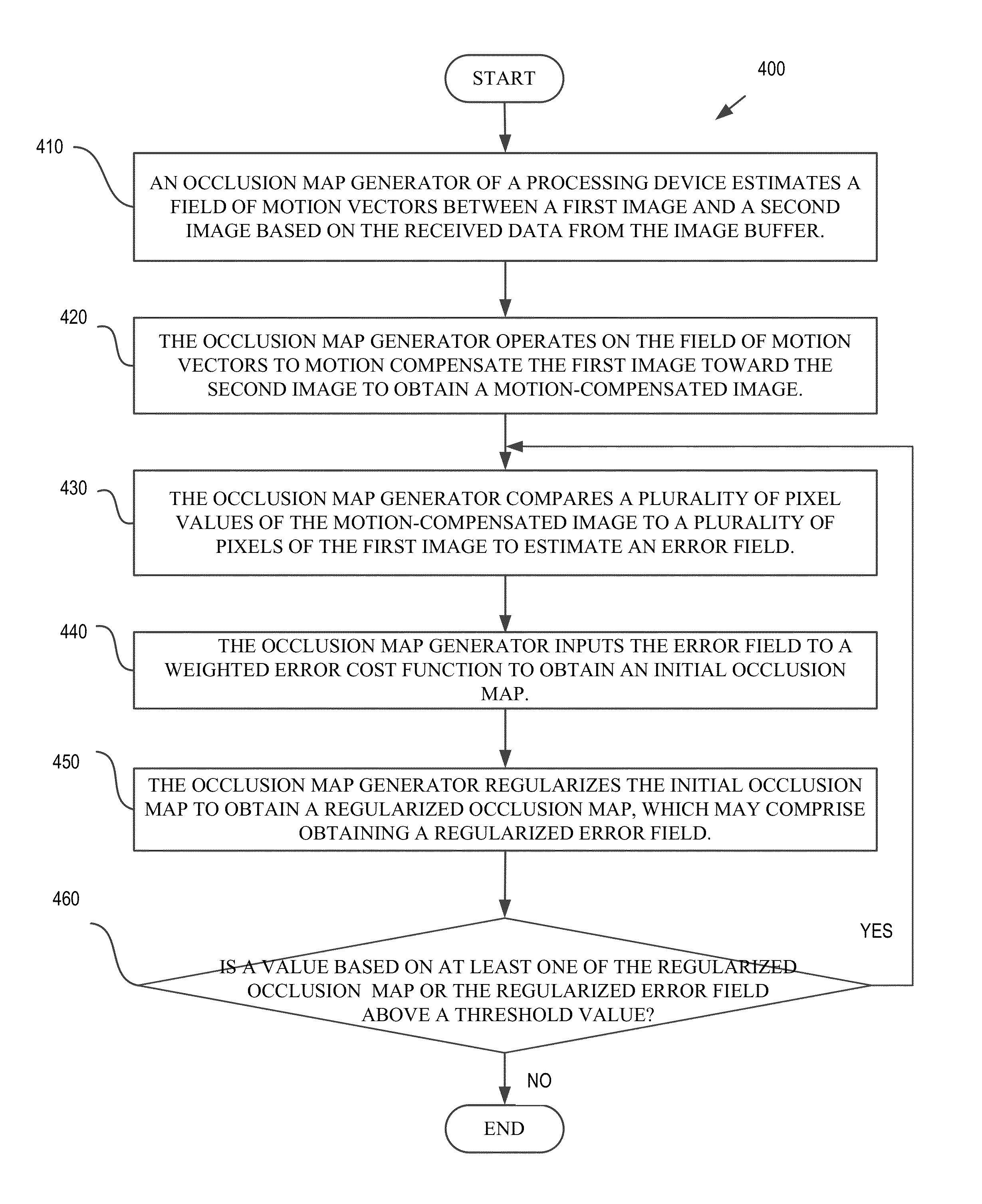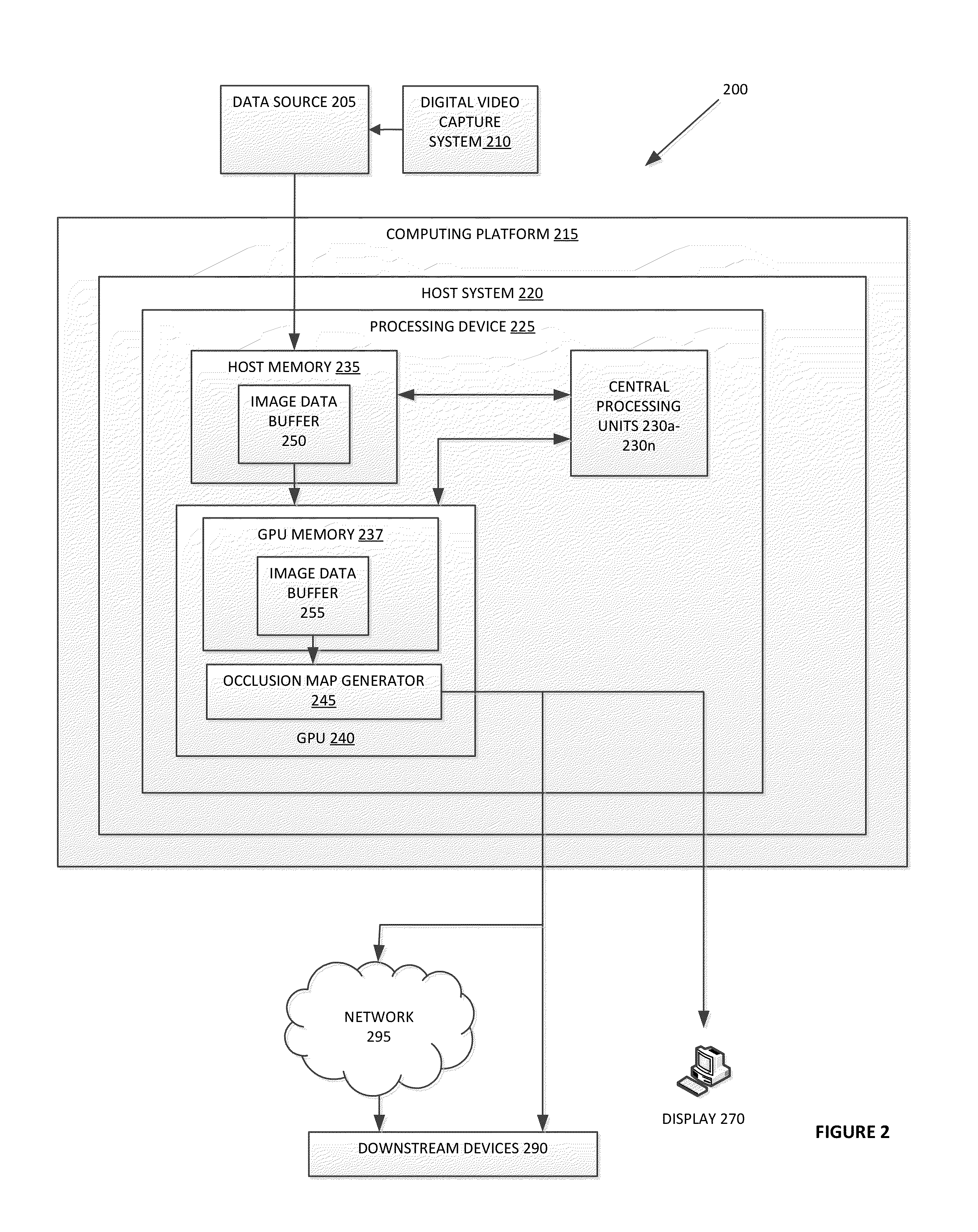Digital processing method and system for determination of object occlusion in an image sequence
a digital processing and image sequence technology, applied in the field of digital image processing, can solve the problems of inherently ambiguous occlusion boundary detection, adversely affecting the overall accuracy of optical flow estimation, and object occlusion
- Summary
- Abstract
- Description
- Claims
- Application Information
AI Technical Summary
Benefits of technology
Problems solved by technology
Method used
Image
Examples
Embodiment Construction
[0024]Motion estimation has been extensively explored in the related art and a determination of accurate motion vectors between images is still a challenging problem. Several solutions have historically been used for motion estimation, such as simple block matching, hierarchical block matching, and optical flow estimation. In order to estimate an accurate motion vector field, the occlusion problem needs to be explicitly confronted. Occlusion detection is also very important in estimating a disparity map for stereo matching. Occlusion marking has independent applications beyond motion estimation and disparity map estimation, such as in video surveillance object sorting / object removal and re-projection of multi-view video and imagery. Also, marking occlusions is very useful for image segmentation, motion segmentation, image in-painting, and disparity in-painting.
[0025]Occlusion occurs under one of the following conditions: a camera or capture system is zoomed in / out, a new object appe...
PUM
 Login to View More
Login to View More Abstract
Description
Claims
Application Information
 Login to View More
Login to View More - R&D
- Intellectual Property
- Life Sciences
- Materials
- Tech Scout
- Unparalleled Data Quality
- Higher Quality Content
- 60% Fewer Hallucinations
Browse by: Latest US Patents, China's latest patents, Technical Efficacy Thesaurus, Application Domain, Technology Topic, Popular Technical Reports.
© 2025 PatSnap. All rights reserved.Legal|Privacy policy|Modern Slavery Act Transparency Statement|Sitemap|About US| Contact US: help@patsnap.com



